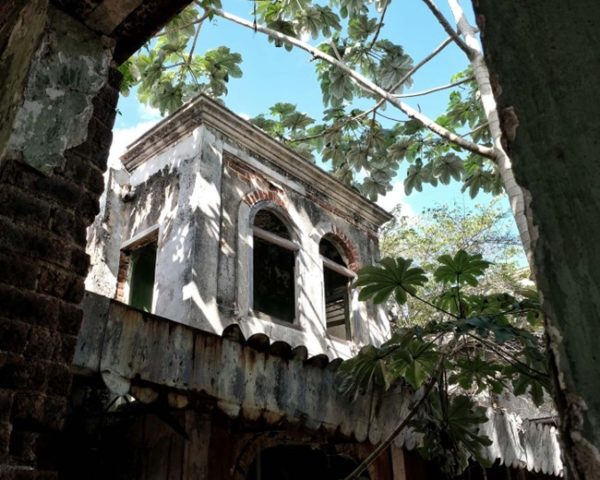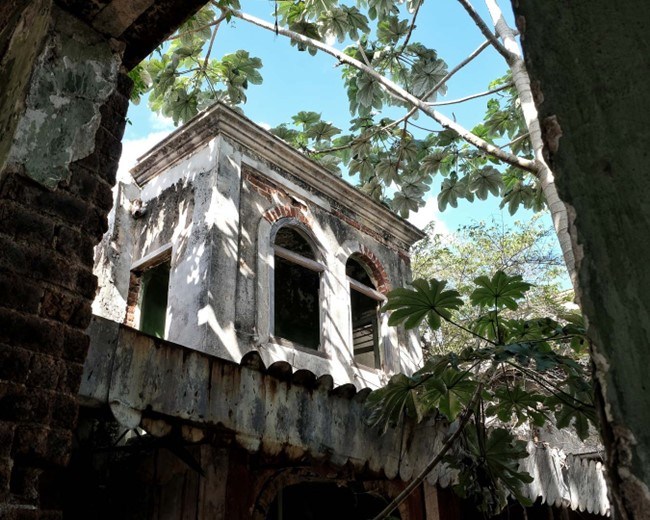
It’s not a problem unique to Matanzas: the phantom of destruction haunts Cuba. Physical and spiritual destruction of heritage.
HAVANA TIMES – Here, where there is a park, some of us still see the “One Hundred Thousand Pesos Building”; a mansion that, as soon as you cross the La Concordia bridge coming from Havana, welcomes you to the center of the city of Matanzas. Only now it’s a ghost building. It finished dying —defeated by time, lack of interest, and money— fifteen years ago.
The children who play there with their bikes, skooters, and tops never saw the spacious entrance hall, its four-meter-high arches, its ten slender columns, or the white marble staircase that led to the second floor. For them, what has always existed are some cement benches where almost no one sits, an ugly and dysfunctional fountain, and the shade of the trees. Before the park, there were ruins in danger of collapse and a trash heap, so it’s not so bad, I suppose.

Towards one of the corners, the Cuban flag waves with the breeze coming from the nearby sea, happy to hear children’s voices. At times, however, it falls on the mast, melancholically and pained —perhaps remembering that the conservation of the nation’s cultural heritage was (is?) an obligation of the Cuban state—, because this architectural piece could not be saved, like so many others.
The building, a landmark of Matanzas neoclassicism, was originally conceived as a residence, and its owners turned it into a hotel towards the second half of the 19th century. In 1920, it acquired the name by which it is still remembered, as a lottery ticket worth one hundred thousand pesos was sold in its portals, a fortune for the time.

Since we’re talking about identity and collective memory, it’s good to remember that before the 2021 economic reforms, when the CUC was at 25 pesos, with 100,000 CUP you could still manage something: a family of four guaranteed a year’s worth of food, or you could buy a Polish Fiat —or an old US car with a gasoline engine— to ensure a stable income by renting it out as a taxi to those with better resources.
In current times, that amount barely covers the cost of a sack of black beans, a string of garlic, and one of onions, plus a few pounds of pork. Maybe it’s enough for an electric pressure cooker to replace the one they sold us almost 20 years ago, during the “energy re


